on the public's right of access to (some of) those letters of support for scooter libby. . .
or, "don't buy the libby-defense-team's
recitation of 'a rule' about such letters
being generally non-disclosable. . ."
to begin, then -- this is the general rule:
AMENDMENT, FIRST:
"Congress shall make no law. . .
abridging the freedom. . . of the press;
or the right of the people peaceably to
assemble, and to petition the government
for a redress of grievances."
make.no.law.abridging. . .
a very interesting discussion has arisen,
over at the nexthurrah, among other places,
as to whether we -- the people, directly,
or via the power of the presses -- will
get to see those letters.
while this will be in no manner a compre-
hensive review of the subject, i did think it
worthwhile to outline the proper framework
for evaluating the public's access to these
letters -- rather than seeing netizens rely
solely on the self-serving discussion of
the area offered by team-libby in its
memo opposing disclosure (see
about 19 pages in, on that link -- as
the first 18 pages are the team fitz
documents), also filed may 25, 2007.
so -- remembering that the first amendment
creates an over-arching constitutional pre-
sumption of access -- let's look at the govern-
ment's precedents for the proper analysis.
patrick fitzgerald filed this memo yesterday:
FOR THE DISTRICT OF COLUMBIA
UNITED STATES OF AMERICA
CR. NO. 05-394 (RBW)
v.
I. LEWIS LIBBY,
also known as "Scooter Libby"
DISCLOSURE OF SENTENCING LETTERS
The UNITED STATES OF AMERICA, by its attorney, PATRICK J. FITZGERALD, Special Counsel, respectfully submits this Memorandum in response to the Court’s order of May 17, 2007, which requested the views, if any, of the parties regarding whether the letters submitted on behalf of the defendant should be sealed or instead made public.
The government notes that letters of current and former public officials may be presumptively disclosable and deserving of separate treatment. United States v. Kushner, 349 F. Supp.2d 892, 906-907 (D.N.J. 2005). [ed. note: kushner holds that a "strong presumption of access applies to sentencing letters that the court "makes explicit reference to at the hearing as playing a role in the judicial formulation of its sentence.] However, at this time the government takes no position regarding the propriety of disclosing the sentencing letters submitted in this case because that issue depends generally on this Court’s treatment of the letters in formulating the sentence, (see id. at 904-910), a matter that has yet to be determined.
In an abundance of caution, the government has filed a redacted version of its Sentencing Memorandum pending a ruling by the Court on this issue.
Respectfully submitted,

Dated: May 25, 2007
okay -- smartly, fitzgerald is not
immediately going to take a position
on the disclosure of the letters. if
it seems there is something nefarious
afoot, he can always move formally to
disclose the letters, later. he has limited
resources, and will remain, appropriately,
focused on the sentencing outcome, not
the public's access to the letters.
fair -- but, as ever, fitz leaves us
a strand of pearls to follow, by his
pointing -- in passing -- to the most-
relevant authority on the topic. . .
so, let's take a look at the case the
government cites -- kushner:
. . .The Supreme Court recognized a First Amendment right to attend criminal trials in Richmond Newspapers, Inc. v. Virginia, 448 U.S. 555, 580 (1980) (plurality opinion).See footnote 44 “In guaranteeing freedoms such as those of speech and press,” Chief Justice Burger reasoned, “the First Amendment can be read as protecting the right of everyone to attend trials so as to give meaning to those explicit guarantees.” Id. at 575. These freedoms become
attenuated unless courts are prohibited “'from limiting the stock of information from which members of the public may draw.'” Id. at 575-76 (quoting First Nat'l Bank of Boston v. Belloti, 435 U.S. 765, 783 (1978)). In a concurring opinion, Justice Brennan emphasized that, while in practice the First Amendment serves to protect communication between individuals, “the First Amendment embodies more than a commitment to free expression and communicative interchange for their own sakes; it has a structural role to play in securing and fostering our republican system of self- government.” Id. at 586-87 (emphasis in original), quoted by United States v. Smith, 776 F.2d 1104, 1108 (3d Cir. 1985) (“Stoneman”).
In subsequent cases, the Supreme Court elucidated the right of access to criminal trials, most notably in Press-Enterprise Co. v. Superior Court, 478 U.S. 1 (1986) (“Press-Enterprise II”). Drawing from Richmond Newspapers and its progeny, Press-Enterprise II extended the right of access beyond the trial itself and applied it to preliminary hearings. See id. at 10. The Court reasoned that if a particular proceeding passed the “tests of experience and logic” -- that is, if the proceeding has historically been open to the public, and if “public access plays a significant positive role in the functioning of the particular process” -- a “qualified First Amendment right of public access attaches.” Id. at 8-9. This qualified right of access can only be overcome “'by an overriding interest based on findings that closure is essential to preserve higher values and is narrowly tailored to serve that interest.'” Id. at 9 (quoting Press-Enterprise Co. v. Superior Court, 464 U.S. 501, 510 (1984) (“Press Enterprise I”)).
The Supreme Court has not ruled on whether the First Amendment right of access to criminal proceedings extends to court documents as well. However, the Third Circuit has answered the question in the affirmative.See footnote 55 In Stoneman, the Third Circuit opined that the analysis under Richmond Newspapers and Press-Enterprise I & II concerning access to judicial proceedings applies with equal force to the issue of access to judicial documents. 776 F.2d at 1111-12. Finding that criminal indictments have been historically accessible, and that such access is essential to public understanding and evaluation of criminal trials, Stoneman held that there was a First Amendment (and common law) right of access to bills of particulars, which the court deemed tantamount to indictments. Id. at 1112.
Nevertheless, the circuit court upheld the district judge's sealing of the bill of particulars. The bill at issue listed names of unindicted individuals who, in the opinion of the U.S. Attorney, “conceivably may have” been co-conspirators. Id. at 1114. Given the less than exacting standard for being named as a co-conspirator on this list, the court acknowledged that public disclosure could have destroyed the careers of innocent individuals and thus viewed the countervailing privacy and reputational interests as sufficiently compelling. Id. Also, the trial judge was held to have narrowly tailored his protective order to include only the co-conspirator list. Id. As a result, Stoneman, while extending the First Amendment right of access to judicial documents, found no constitutional violation on the record before it and affirmed the district court. Id. at 1115.
Thus, the Third Circuit's First Amendment jurisprudence in the public access realm appears to employ strictly the “experience and logic” test of Press-Enterprise. Moreover, it recognizes that interests of privacy and reputation can be compelling enough to overcome the constitutional right of access, a right which, when it attaches, is extremely difficult to surmount. The Court now turns to the second doctrine, the common law right of access to judicial records.
2. Common Law Right of Access to Judicial Records
The common law right to inspect and copy judicial records predates the Constitution and was formally recognized in Nixon v. Warner Communications, Inc., 435 U.S. 589 (1978). It is rooted in many of the same principles that form the basis of the First Amendment right, including the need for accountability of the otherwise independent judiciary, the need of the public to have confidence in the effective administration of justice, and the need for civic debate and behavior to be informed if it is to have value. United States v. Criden, 648 F.2d 814, 820-21 (3d Cir. 1981) (“Criden I”); United States v. Amodeo, 71 F.3d 1044, 1048 (2d Cir. 1995). A qualified right of access attaches automatically to all judicial records, without a showing of any particularized need. See Nixon, 435 U.S. at 597-98. What constitutes a “judicial record” hinges on “whether a document has been filed with the court, or otherwise somehow incorporated or integrated into a district court's adjudicatory proceedings.” In re Cendant Corp., 260 F.3d 183, 192 (3d Cir. 2001).
Notwithstanding the “automatic” nature of this right of access, it is not absolute. This is so, because “[e]very court has supervisory power over its own records and files,” and access to records can be properly denied “where court files might have become a vehicle for improper purposes” _ for example, “to gratify private spite or promote public scandal.” Nixon, 435 U.S. at 603 (internal quotes and citations omitted). Nixon recognized that, while a comprehensive definition of the common law right is unavailable, it is universally accepted that “the decision as to access is one best left to the sound discretion of the trial court, a discretion to be exercised in light of the relevant facts and circumstances of the particular case.” Id. at 598-99.
In Criden I, the Third Circuit had occasion to address the common law right of access in the context of video tapes admitted into evidence during the well-publicized “Abscam” prosecutions. The tapes at issue had been played in open court before the jury, and the disclosure issue focused on the right to rebroadcast them to the public. See 648 F.2d at 822. The district court denied the intervening broadcasters' application to copy and distribute the tapes on the grounds, inter alia, that the rebroadcast would taint the jury pool in the event of retrial and unduly punish innocent third parties. Id. at 816. On appeal, the circuit court held “that there is a strong presumption that material introduced into evidence at trial should be made reasonably accessible in a manner suitable for copying and broader dissemination.” Id. at 823. This “strong presumption” was based on two factors: first, the common law right of access to judicial records identified in Nixon, and second, “the significant interest of the public in observation, participation, and comment on the trial events.” Id.; accord United States v. Martin, 746 F.2d 964, 968 (3d Cir. 1984). . .
note especially that in cases where access
was held not warranted, it was very narrowly
tailored -- only the names of the unindicted
co-conspirators, for example, in stoneman were redacted.
the privacy interest was reputational -- presumably
the unindicted co-conspirators did not ask to be in-
vestigated. clearly, anyone who wrote a letter for
mr. libby made a choice to do so. the government
did not put the letter-writers in the middle of
one of the more important high-ranking-govern-
mental-agents' wrongdoing cases of the last twenty
years. no, they made that choice, on their own. it
must be noted that -- given the level of suspicion
about concerted action on the part of the white house,
including the office of the vice president, and his
former chief of staff, the american people and press
possess a very legitimate interest in being sure that
everything -- everything -- with respect to mr. libby's
sentencing is handled up in the sunshine, not below-decks.
so -- the letter-writers having their
names disclosed may well be a simple
consequence of the peoples' right of
access -- given the high-profile, and
extremely newsworthy nature of the
crimes mr. libby committed, and for
which he was convicted.
conclusions.of.law.here. . .
so -- based on the precedents cited in
kushner, above -- the most-salient inquiry is:
to what extent will judge walton rely,
in his ultimate judicial/sentencing
decision-making process -- on any
or all of the letters? -- this, at
least as to letters not from public
officials, will be the key factor in
making the disclosure determination.
as to any letters from public officials:
those, almost certainly, will be disclosed.
that said, timing is very important
here, though. the letters, almost certainly,
won't be seen until after his
sentencing-order has been entered. . .
so -- it is pretty clear that for
every letter upon which judge walton
relies in his sentencing, the public
has a presumptive right of access.
and, for every letter submitted by
any public official -- regardless of
whether judge walton relies on the
letter in sentencing -- there is a
presumptive right of public access.


































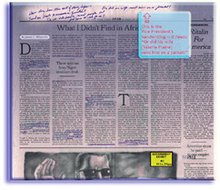





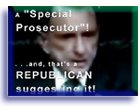













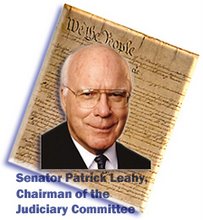

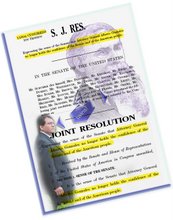
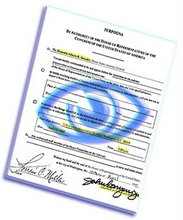









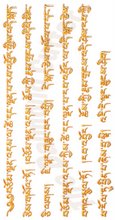
No comments:
Post a Comment